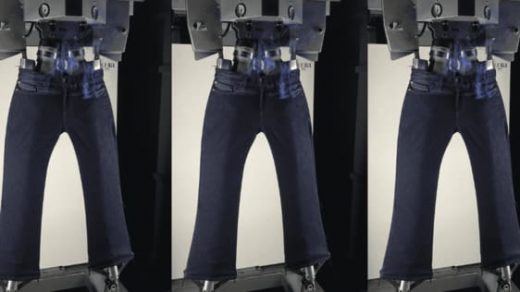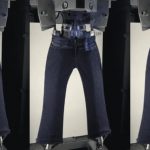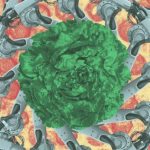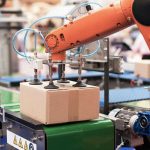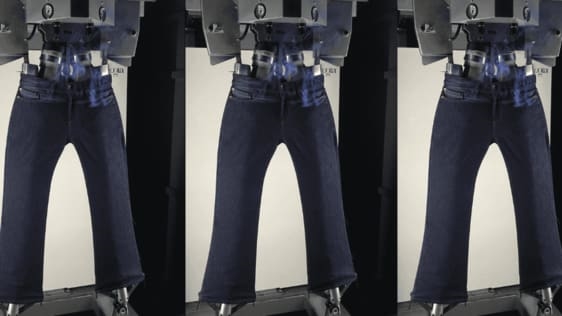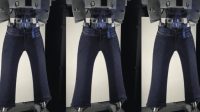Levi’s Invented A Laser-Wielding Robot That Makes Ethical Jeans
You know those jeans that you love, the ripped ones that look like they’re 30 years old? (Even though you just bought them last year.)
You probably don’t realize it, but a team of designers took weeks to figure out exactly where to fade the indigo and position the tears for the most authentic vintage look. Then, factory workers used sandpaper and harsh chemicals to make it look properly worn in. The jeans were probably washed for hours, so that the blue color would fade out–even though those dyes would inevitably end up polluting the groundwater.
At Levi’s, a brand that talks about trying to be as sustainable and humane to workers as possible, the ugly reality of what it takes to make jean—especially when you are selling $4.6 billion worth of them a year—isn’t something that is brushed under the table.
“Our company alone offers over a thousand different finish looks per season, which is mind boggling,” says Bart Sights, who heads up Levi’s innovation center, called the Eureka Lab. “They’re all produced with very labor-intensive, repetitive motion jobs, and a long list of chemical formulations. That’s a pretty dark picture of how things have been.”
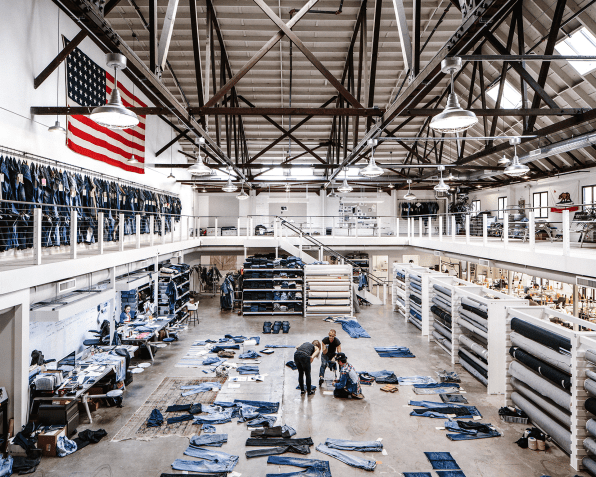
A Giant Leap For Denim
But Sights believes the future is looking brighter. He and his colleagues at the lab have spent years working on a new laser technology that will, in a snap, do what now takes much longer. The breakthrough uses infrared light to etch off a very fine layer of the indigo and cotton from a pair of jeans, creating the same kind of faded finishes and tears in 90 seconds flat.
Today, Levi’s unveils this new tech, which Sights says will automate many new aspects of the company’s denim-making process, from the design and prototyping, to the manufacturing, to catering to consumer demand. “It’s definitely not an incremental change,” Sights says. “It’s radical.”
“It started as an idea for a change in a manufacturing process,” says Liz O’Neill, Levi’s supply chain officer. “But it has actually evolved into a holistic digital transformation that covers the whole supply chain from end to end. We’ve opened up a whole new operating model.”
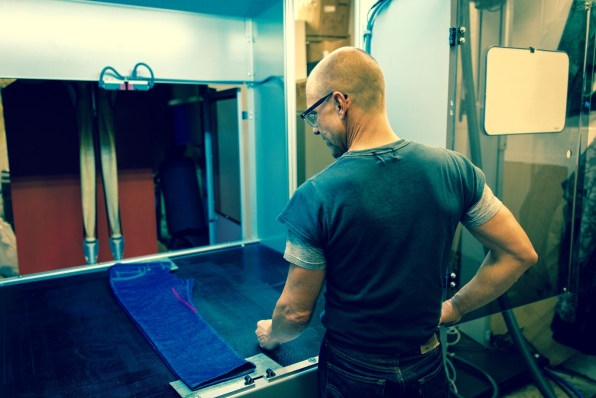
Rolling out the change is no small feat, particularly for a company the size of Levi’s. The company employs 13,500 workers around the world—not including those that work at third-party factories. Levi’s jeans are sold at 50,000 retailers in 110 countries. A change like this will mean retraining hundreds of people and changing the time it takes to get products to stores. But by introducing these laser-wielding robots into Levi’s factories around the world, it has the potential to eliminate many repetitive, dangerous tasks that are an everyday part of the job for denim workers. Over time, it might even cut down on the need for such a large workforce.
O’Neill believes that this kind of disruption is necessary to keep Levi’s at the cutting edge, both in terms of sustainability as well as being able to nimbly respond to the latest trends. Levi’s is currently scaling the technology and hopes to soon implement it throughout the company. “We’re all in, we’re going for it,” O’Neill says. “Our intention is that for 2019 and beyond, we’re going to have scaled this technology. We’re going to be making upwards of 75 million pairs of denim like this.”
Prototyping In Hours, Not Days
Besides the laser technology, the Eureka lab also created a video game-like software that allows designers to build new styles on an iPad. The platform allows them to, say, take one of Levi’s styles like the 501 or the 511 in one of a few basic colors, then use buttons and levers to distress the jeans, add studs, rips, or other design elements.
While fashion design software is nothing new, the Eureka lab tried to make the 3D graphics more realistic than other tech on the market. And more importantly, the digital file that the designers produce can be immediately sent to the laser machine, which will produce the design on a prototype of real jeans.
This is very different from how jeans are typically prototyped, which involves taking an image and having people manually re-create it on a pair of jeans using sanding and chemical treatments. It might turn out that the design doesn’t look as good when applied to real jeans, or the designer might feel like they want to add more tweaks. With this new system, the images are as realistic as possible, and then the laser turns that vision into reality within 90 seconds. “There’s a lot of digital tools out there in apparel,” Sights says. “We didn’t feel that any capture the natural texture of denim, so we created one. Now, when we get an image that is exactly how we like it, it eliminates the need for multiple iterations.”
O’Neill says that this new tablet design tool reduces the process it takes to prototype a pair of jeans to just three steps. Previously, with all the drawing, reiterating, and then manually creating prototypes, it took between 12 and 18 steps. It also means not wasting as much material, since the photo-realistic accuracy of the new software means the prototype is as close to what the designer imagined as possible.
The Right Wash In 90 Seconds
But just as powerfully, that digital file can be sent to a manufacturing facility or a warehouse, where an entire season’s worth of jeans could be made using automated lasers rather than manual labor. Sights says that this could create a much safer environment for workers and reduce the number of harsh chemicals used in the process.
In 2016, Levi’s launched a new initiative called Screened Chemistry that studied all the chemicals used in the manufacturing process. It flagged the most toxic to phase out, including potassium permanganate, which is used in almost all denim manufacturing in the world but has terrible side effects when inhaled, including coughing, sore throat, shortness of breath, burning sensations, and labored breathing. Many of the worst chemicals can be eliminated with this new tech. “The manual work required to create these different washes requires highly repetitive motions,” he says. “We were using upward of thousands of different chemical formulations to achieve these finishes, but this will now go down to dozens. So that’s a huge win for us.”
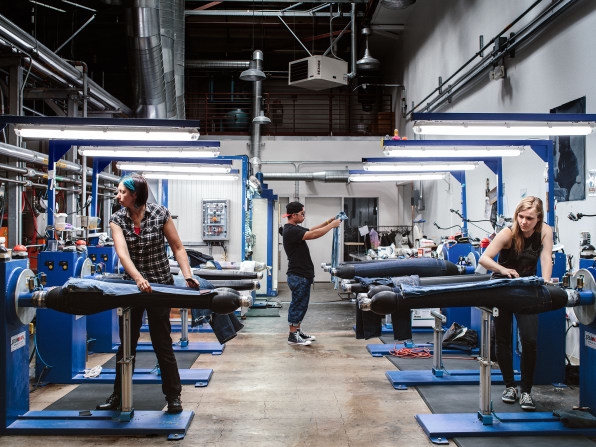
In some ways, bringing the technology to factories is one of the hardest parts of the process, because it will involve working with third-party manufacturers. As a start, Levi’s will introduce the lasers into its large warehouse outside Las Vegas, where a proportion of jeans will go to market using this new system. But over time, the company will roll it out globally.
Speeding New Designs To Market
For a company as large as Levi’s, it takes more than a year to go from a prototype to a product that the customer can purchase. The design process itself takes a long time, then producing the styles in Levi’s global network of factories can take months. Finally, all this inventory is then rolled out across Levi’s extensive retail network. By the time the customer tries on the jeans in the changing room, they may not be as trendy as when the designer was dreaming them up.
The new process could radically speed up the time it takes to bring a new design to market. O’Neill says that if a new trend emerges, a designer could whip up a prototype within hours, which could then be produced at scale within months. “We’re going to be far more accurate in actually matching supply and demand dynamics,” she says. “If you can create those finishes in a way that more closely meets the customer’s expectations, then you’re going to be more accurate about the volume of the final inventory that you order.”
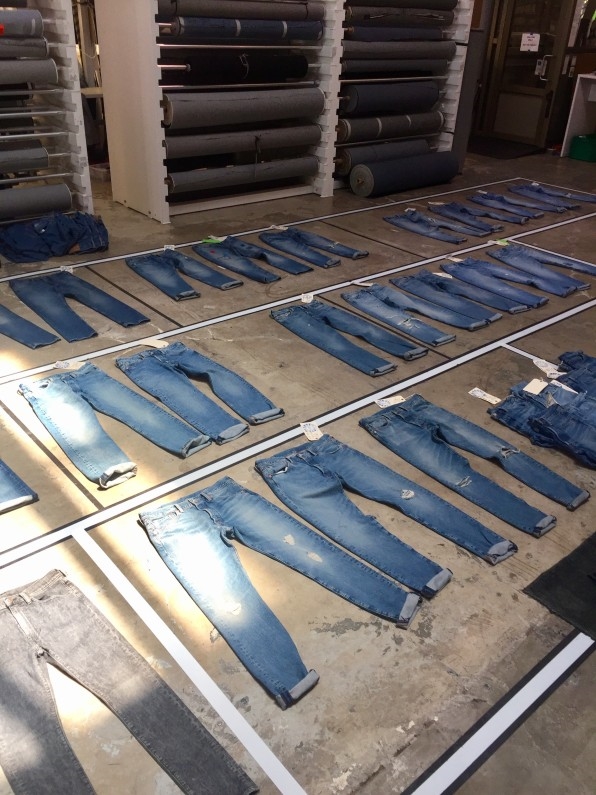
This is important because there is a lot of waste in the fashion industry, a sizable chunk of which comes from new clothes that were never sold. According to some estimates, between 80 and 100 billion never-worn garments are sent to landfills globally every year. A lean approach, like the one that Levi’s is using, could cut down on this waste and provide a model for other huge apparel corporations to follow. While O’Neill and her team of supply chain experts are still trying to assess exactly how much waste Levi’s will avoid through this process, she believes it will be “significant.”
“When it came to inventory, we were making calls too early and those calls were sometimes wrong,” O’Neill says. “That’s the reality in the apparel industry because trends can be fickle. We’re shifting our model from ‘sell what you make’ to ‘make what you sell,’ and this will absolutely improve our overall inventory health.”
(37)

